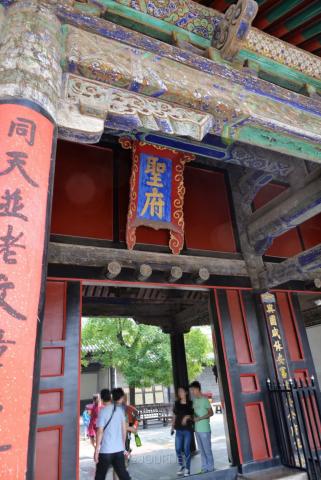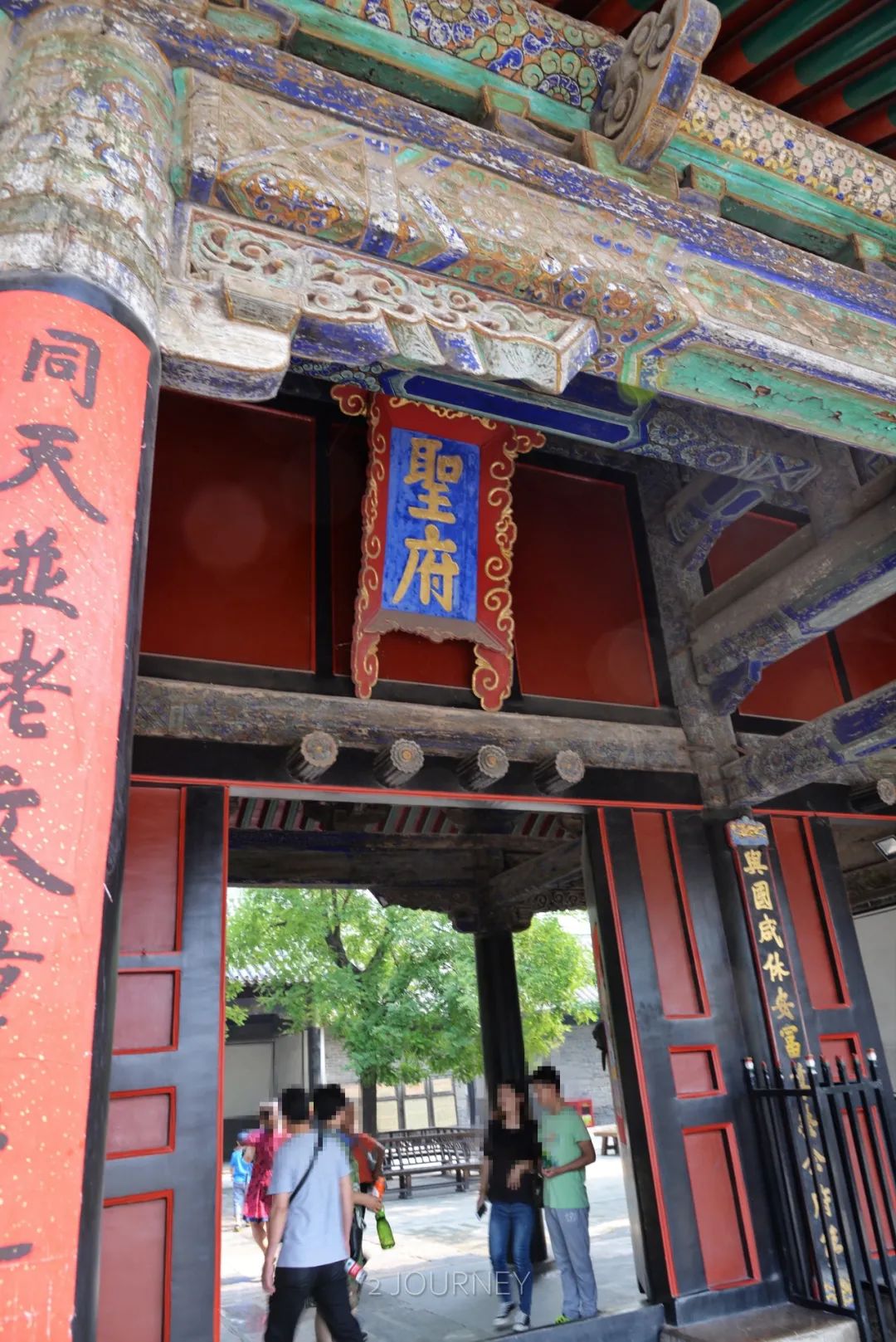
Confucius Mansion is adjacent to Confucius Temple.
Kong Mansion, also known as Yan Sheng Gong Mansion, is the residence of the descendants of Confucius' hereditary Yan Sheng Gong. It was first built in the 10th year of Hongwu in the Ming Dynasty (1377), and rebuilt in the 16th year of Hongzhi in the Ming Dynasty (1503). It was restored in the third year of Guangxu, the ninth year of Guangxu, and the twenty-fifth year of the Republic of China.
The buildings of the Ming and Qing dynasties in the Confucius Mansion include 463 halls, halls, buildings, pavilions, and nine courtyards. It is a typical Chinese aristocratic family home and a typical building in Chinese feudal society where the official office and the inner residence are integrated. It is divided into front hall (official office), Zhongju (inner house) and back garden (garden).
The plaque "Holy Mansion" on the main entrance is said to be handwritten by Yan Song, the Prime Minister of the Ming Dynasty.

Couplet: With the residence of Guo Xianxiu Anfu Zunrong, the same day as the home of the moral saint of Lao Wen, it is said to be handwritten by Ji Yun, a calligrapher of the Qing Dynasty.
Li Dongyang, a great scholar of the Hongzhi Dynasty of the Ming Dynasty, wrote "The Gate of Saints" and erected a plaque in his handwriting


Two towering trees cover the entire courtyard.
Later there was Chongguang Gate built in the 16th year of Hongzhi (1503).
The lobby of the Confucius Mansion was the place where Yan Shengggong read out imperial edicts to meet officials, enforce family laws and clan rules, hear major cases, and hold festivals and birthday ceremonies.


On both sides and at the back of the hall are displayed the ceremonial guards of the first rank, such as golden melons, upward stirrups, curved guns, sparrow guns, hooked guns, Genggu, cloud tablets, dragon flags, phoenix flags, tiger flags, umbrellas, fans, etc. There are also some official title plates with gold characters on a red background indicating their titles and privileges, such as "Feng Yanshenggong", "Awarded to Guanglu Doctor", "Wearing double-eyed feathers", "Riding in the Forbidden City", "Inspecting Shandong Province by order" Provincial Academic Affairs” etc.

On both sides of the lobby are the Guangou Hall, the Hundred Households Hall, the Classical Books Hall, the Siyue Hall, the Zhiyin Hall, the Zhangshu Hall, and the Public Administration Hall of the Confucian Mansion.
The corridor behind the lobby is connected to the second hall. There is a long red lacquered stool in the corridor. This stool was the stool where Yan Song sat and waited.

After the three halls, there is the inner residence of Confucius Mansion, also known as the inner residence.

The passage to the inner house is narrow and tight, making it difficult for one person to pass through (it is said to be to prevent bandits).

The upper front room, with seven main halls, is the living room where the master of the Confucius Mansion receives relatives and close relatives. It is also the main place for family banquets, weddings and funeral ceremonies.
The front hall building has seven two-story pavilions, which are the bedrooms of the 76th generation Sun Yan Shengdong, Kong Lingyi, his wife, and his daughter. The interior furnishings and layouts still maintain their original appearance.



The back hall is a 7-room building with a second-story front porch. There are 3 annex buildings with a second-story front porch on the east and west sides. It is the residence of Kong Decheng, the 77th generation grandson of Confucius and Yanshenggong.




Displayed in the hall are the furnishings from when Kong Decheng got married (in 1936), as well as calligraphy, paintings and gifts given by friends at that time.

The last five rooms



The Confucius Mansion Garden is located in the last part of the Confucius Mansion, covering an area of more than fifty acres. Built in the 16th year of Hongzhi in the Ming Dynasty (1503), the garden is complete with rockeries, ponds, bamboo groves, curved bridges, flower docks, waterside pavilions, fountains, stone islands, flower halls, incense altars, balconies, etc.


Five cypresses that are more than 500 years old embrace a locust tree, and a locust tree grows through the body of the cypress.
After leaving the Confucius Mansion, I called a tricycle and went back to the hotel along the courtyard wall of the Confucius Mansion.


Next stop, take the high-speed train from Qufu East Station to Tai'an.
